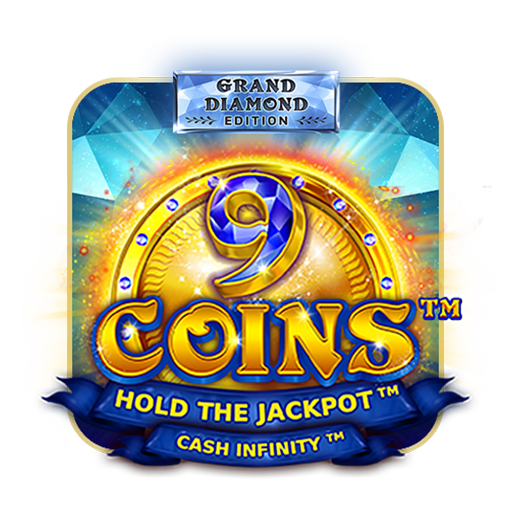The Birth of Slot Machines: The Mechanical Reels Era
The First Slot Machine: Liberty Bell
The story of slot machines begins in the late 19th century. In 1891, a machine known as the “Poker Machine” was invented by Sittman and Pitt, a New York-based company. It was a mechanical machine with five drums, each containing 50 playing cards, and players would wager on the cards that appeared on the reels. However, the machine lacked a real payout mechanism, and payouts were done manually by the bartender or operator.
The first true slot machine that paid out coins was created by Charles Fey, a mechanic from San Francisco, in 1895. This machine was called the “Liberty Bell”, and it became a massive hit. The Liberty Bell had three reels with five symbols: horseshoes, diamonds, spades, hearts, and the Liberty Bell itself. If a player landed three Liberty Bells in a row, they won the highest jackpot of 50 cents—an impressive amount at the time. This is the basic structure that would define slot machines for decades to come: mechanical reels, a set of symbols, and a jackpot.
The Mechanical Reels Era
The popularity of the Liberty Bell inspired others to create similar machines, and soon, mechanical slot machines began to proliferate in bars, saloons, and casinos. These early machines were simple, with just a few reels and a limited number of symbols. Players would insert coins, pull a lever, and watch the reels spin. If the symbols aligned in a certain combination, they would win a payout.
Over the years, the machines evolved, with Bally introducing the first fully electromechanical slot machine in 1963. The electromechanical system allowed for more sophisticated payouts and greater customization in terms of jackpots, sound effects, and lights. Despite these advancements, the core design of slot machines remained relatively unchanged until the 1980s.
The Digital Revolution: The Rise of Video Slots
The Advent of Video Slots
The 1980s marked the beginning of the digital revolution in the world of slot machines. Bally once again led the way by introducing the first video slot machine in 1976—“The Fortune Coin”. This game was different from traditional mechanical slots because it used a video screen rather than physical reels. The Fortune Coin was revolutionary in that it allowed for more intricate game designs, and the introduction of animated symbols added to the appeal.
However, it wasn’t until the 1990s that video slots became mainstream. Advances in computer technology and graphics allowed developers to create more complex games, complete with interactive bonus rounds, elaborate themes, and larger jackpots. IGT (International Game Technology), one of the most prominent slot machine manufacturers, introduced the “Megabucks” machine in 1986, which featured a progressive jackpot that could grow into millions of dollars. This marked the beginning of large-scale jackpot games, which would become a hallmark of online slots in the future.
Transition to Online Slots
As the internet grew in popularity in the late 1990s and early 2000s, it was only a matter of time before the world of slot machines moved online. Online casinos began to emerge in the mid-1990s, offering digital versions of traditional slot machines. These online slots were powered by software programs rather than physical hardware, allowing developers to create far more innovative games. Players could now enjoy the excitement of slots from the comfort of their own homes, without ever having to step foot in a casino.
Online slots took advantage of the flexibility offered by digital platforms to introduce features like bonus rounds, free spins, and progressive jackpots, which were much more complex than anything available on mechanical or video slots. These online games also made it easier for developers to implement a wide range of themes, from classic fruit machines to video slots based on movies, TV shows, and pop culture.
The Current Landscape: Mobile Slots and Virtual Reality
The Rise of Mobile Slots
The 2010s ushered in the era of mobile gaming, with smartphones becoming a ubiquitous part of daily life. As mobile technology advanced, so did online slots, leading to the rise of mobile slots. Developers began creating slot games specifically designed for smartphones and tablets, optimizing their graphics, user interfaces, and gameplay for smaller screens and touch controls.
Mobile slots are now a massive segment of the online gaming market, with many players opting to enjoy their favorite slot games while on the go. These mobile versions of slots are often identical to their desktop counterparts in terms of gameplay, features, and jackpots, but they are tailored to fit the unique needs of mobile users.
The Future: Virtual Reality and Beyond
Looking ahead, the future of slot machines seems to be inextricably tied to emerging technologies like Virtual Reality (VR) and Augmented Reality (AR). Some developers are already experimenting with VR slots, creating immersive environments where players can interact with slot machines in a 3D space. These VR slots allow players to experience the thrill of spinning the reels in a fully immersive casino environment, complete with virtual dealers and other players.
AR technology also has the potential to revolutionize the way we play slots. Imagine walking into a casino, pointing your phone at a slot machine, and seeing additional information or interactive elements appear right on your screen.
While VR and AR are still in their infancy, they represent the next frontier in slot machine evolution, taking the experience to new heights and offering players even more ways to engage with their favorite games.
FAQ: Everything You Need to Know About Slot Machines
1. When were slot machines invented?
Slot machines were invented in the late 19th century. The first true slot machine was created by Charles Fey in 1895 and was called the Liberty Bell.
2. How do mechanical slot machines work?
Mechanical slot machines used a system of physical reels, each with different symbols. Players would insert coins, pull a lever, and watch the reels spin. If the symbols aligned in a certain combination, they would win a payout.
3. What was the first video slot machine?
The first video slot machine, called Fortune Coin, was introduced in 1976 by Bally. It replaced the traditional mechanical reels with a video screen, allowing for more complex game designs.
4. How did online slots come about?
Online slots began to appear in the mid-1990s, coinciding with the rise of the internet. These digital slots were powered by software and allowed players to enjoy the games from the comfort of their homes. They introduced new features such as progressive jackpots, bonus rounds, and elaborate themes.
5. Are mobile slots the same as online slots?
Mobile slots are a subset of online slots, optimized for smartphones and tablets. While the gameplay and features are often identical to their desktop counterparts, mobile slots are designed to work on smaller screens with touch controls.
6. What are progressive jackpots?
A progressive jackpot is a jackpot that increases over time as players make wagers. A small percentage of each bet contributes to the jackpot, which continues to grow until one lucky player hits the winning combination. These jackpots can reach millions of dollars, offering life-changing prizes.
7. Will slot machines continue to evolve?
Yes, the future of slot machines includes the integration of new technologies such as Virtual Reality (VR) and Augmented Reality (AR). These technologies will allow players to interact with slots in entirely new ways, creating an even more immersive experience.
8. How do online slots work?
Online slots use Random Number Generators (RNGs) to ensure that each spin is independent and random. These games are programmed with specific paytables and payout structures, and the outcome of each spin is based purely on chance.
9. Can I win real money from online slots?
Yes, many online slots offer real-money payouts, especially those played at licensed online casinos. However, winning is never guaranteed, as slots are based on random chance.
10. What’s the difference between a mechanical and a video slot?
Mechanical slots use physical reels that spin when the player pulls a lever. Video slots, on the other hand, use digital screens to display reels and symbols, allowing for more advanced features like animations, bonus rounds, and themes based on movies and TV shows.
Conclusion
From their humble beginnings as mechanical machines in the 19th century to the innovative, high-tech online and mobile slots we enjoy today, slot machines have undergone an incredible evolution. Technological advancements have continuously shaped the industry, offering players new ways to engage with games, win large jackpots, and experience immersive gameplay. As we look ahead, the future of slot machines seems brighter than ever, with VR and AR poised to take the experience to new, exciting heights. Whether you’re a seasoned player or a newcomer to the world of slots, one thing is certain: slot machines will continue to evolve, and the thrills will only get bigger and better.







































